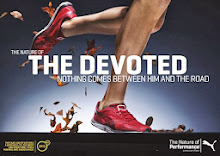These are some of the reasons I have collected over the web over why one should go negative in their running strategy:
1. It can take your body several miles to get warmed up. After that, your muscles are charged, your joints lubricated, and mood-boosting endorphins flood your system. Your muscles increase in warmth and resiliency. You'll find yourself running faster without feeling any more effort.
2. Negative splits still hurt, but they hurt a lot better than positive splits. This means starting hard and trying to finish hard, and inevitably failing, is worse than starting easy and finishing hard.
3. You also gain a lot of confidence in your ability to finish strong and the more conservative early pace keeps your pain level down. Your faster pace at the end of the race will provide psychological advantages as u pass other runners with tired legs.
4. It allows for greater margin of error in case you miscalculated your ability on race day or any of many other variables bite you in the butt. If you go out a bit slow, you have adequate time to make up for it. So it’s better to err on the side of caution.
5. It results in slower consumption of glycogen, which means that your body becomes less dependent on fat for fuel earlier in the race. You will reach your lactate turn point later in the race allowing for more energy and speed in the last miles.
6. You reach your AT/LT later in the race, so a smaller portion of the race is spent running aerobically, i.e., the wall arrives later and easier. Its better to hit the AT/LT later rather than sooner.
7. Since it's so difficult to run even splits in a marathon, it's usually better to err slightly to the conservative side than to be a little overly aggressive.
8. The fast early pace is the very reason for the fade in the second half.
9. You can always speed up at the end if you're feeling good.
10. The crowded conditions at the start of many races make it impractical to start out at a pace close to target pace for the first mile or few, so we might "lose" some time.
However, it's a mistake to try to make up that slow start either in the earliest miles that we can or by waiting until the last few miles of the race. It's better to spread the "makeup" over all of the rest of the race with the emphasis on the middle miles.
Monday, December 15, 2008
Subscribe to:
Post Comments (Atom)

No comments:
Post a Comment